- What are long tail keywords?
- The 2 main reasons to use long tail keywords
- Less competition
- More qualified leads
- 5 of the best ways to find them
- Geography, industry, or service-based
- Google’s search term report
- Google’s search console performance report
- Search autofill
- Related searches
- Attract high-quality leads with long tail keywords
With search advertising continually on the rise, high-volume keywords don’t hold as much power as they used to. Digital advertisers like you have to think more strategically when identifying keyword phrases to bid on.
Today, long tail keywords — more specific and those with lower-volume, provide a great opportunity to drive ROI for your business.
What are long tail keywords?
Long tail keywords contain at least three terms derived from a broad search term or head term. These keyword strings are particular and niche to your offer. For example, the head term “marketing” or even short-tail keyword “marketing strategy,” can be expanded to the long tail keyword “marketing strategy for new product launch:”
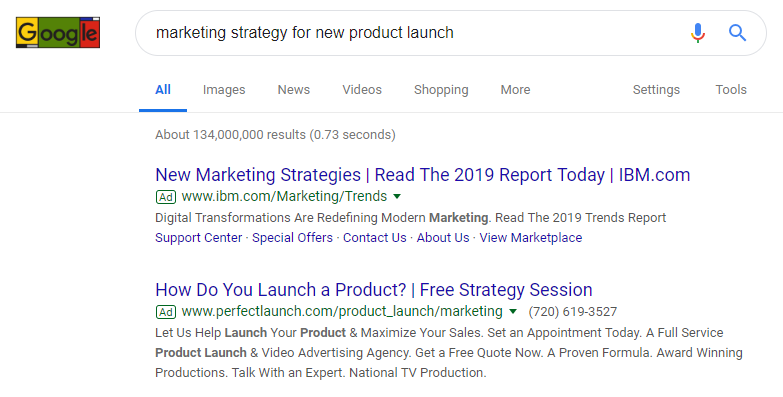
As we move into the following section, keep in mind the path of the typical buyer’s journey:
- Consumer becomes aware of a product that could solve their problem.
- Consumer seeks information about that product.
- Consumer evaluates alternatives to the product (features, pricing, etc.).
- Consumer makes their purchase decision.
- Consumer completes the transaction.
Now let’s move onto the main benefits of long-tail keywords to see why this path is important.
2 main reasons to use long tail keywords vs short tail
1. Less competition
With less competition, means lower cost. The phrase “long tail” is a visual metaphor for the shape of a keyword distribution graph:
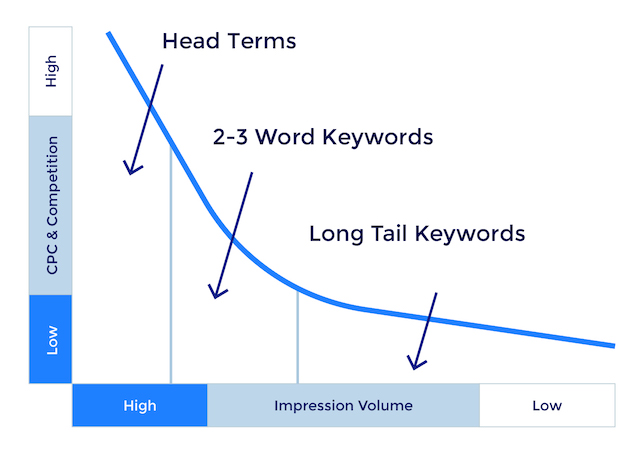
Head terms are found in the top-left of the diagram above. These search terms are very vague and have:
- High search volume
- Most competition
- Highest cost per click
Short tail keywords are slightly more descriptive, with 2-3 keywords. They have:
- Slightly lower search volume
- Less competition
- Lower cost per click
Long tail keywords are found near the bottom-right of the diagram, just as the phase suggests. These longer phases — at least 3 words — make the search much more specific. They have:
- Very low search volume
- Little competition
- Lowest cost per click
Bidding on long-tail phrases instead of head or short-tail phrases means there is less competition so it’s easier for you to win impressions among the other ads, and ultimately, lower your CPC.
2. More qualified leads
From the previous graph, and the one below, the bottom-right section accounts for the smallest percentage of searches, slightly more come from short tail keywords, and about 70% generate from long tail keywords. That means the majority of page views are the direct result of long tail keywords.
Not only that, but the leads visiting your page are also more qualified — because with longer keyword phrases, you may receive fewer impressions and traffic, but the quality will be higher. You’ll be attracting audiences with more intent, they’ll be closer to purchasing, and your return on your investment will be higher.
Why will they be closer to purchasing? That’s where the buyer’s journey comes in.
Take a look at the keyword distribution graph again, with some long-tail keyword examples:
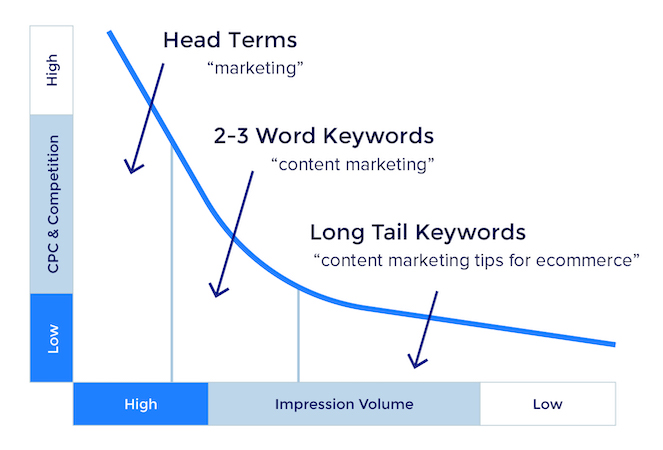
“Marketing” as the head term would have the highest search volume because it’s the broadest phrase. Naturally, people searching for “marketing” likely aren’t anywhere near ready to purchase anything. Their buyer’s journey is just beginning, and they’re probably at step one in the numbered path listed above, perhaps not even sure what they’re looking for yet.
If someone searched for the short tail keyword, “content marketing” instead, they may be slightly further along — around step two or three — but still not ready to convert. As a marketer motivated to generate downloads of say, an ebook for ecommerce content marketing tips — you wouldn’t want to target someone searching for “content marketing.” It wouldn’t drive as many qualified leads as a more specific search phrase would, since many of them wouldn’t be interested in ecommerce-specific tips.
That takes us to the long tail keyword: “content marketing tips for ecommerce.” This phrase will likely deliver the most interested, qualified searchers. The search users at step 4 of the buyer’s journey know exactly what they’re looking for and are ready to buy or redeem it.
5 of the best ways to find long tail keywords
Just as there are strategic ways to find head keywords or negative keywords, there are also common ways to locate long-tail keywords.
1. Add geography, industry, or service-based words to your primary keyword
All of these would allow more focused, ready-to-convert searchers to find your offer.
Here are some examples:
- Geography: If you’re an email marketing agency in Buffalo, NY, your long-tail keyword could be “Buffalo, New York email marketing agency,” instead of just “email marketing agency.”
- Industry: If your company specializes in retail-based website design, your long tail could be “retail industry web design,” instead of “web design.”
- Service: Instead of just “PPC agency,” use the long tail keyword, “Google Ads certified PPC agency.”
2. Use Google’s search term report
The search terms report identifies how your ads performed when triggered by actual searches within the Search Network. You can use this information to discover new search terms with high potential to add to your keyword list, or irrelevant terms and phrases to add to your negative keywords list:
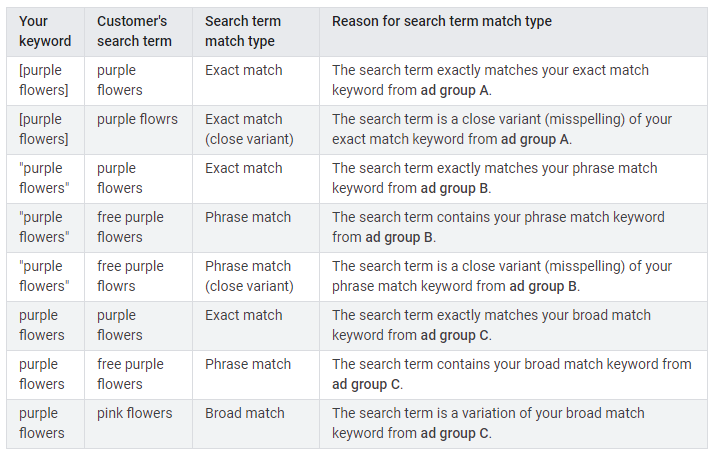
The “Your keyword” column lists your keywords that matched someone’s search term (the second column) and triggered your ad. The “Search term match type” column indicates how closely the search terms that triggered your ads are related to your actual keywords.
3. Google’s search console performance report
Sometimes, the best long-tail keywords are phrases you already rank for and aren’t even optimizing — the ones that allow your pages to appear on the 2nd, 3rd, or 4th page of Google SERP.
You can easily find these keywords in the Google Search Console (GSC), and then use them as long-tail bid phrases.
4. Search autofill
This might be the fastest way to identify new long-tail keywords because you simply let Google’s suggestion algorithm do the work for you. For instance, social media:
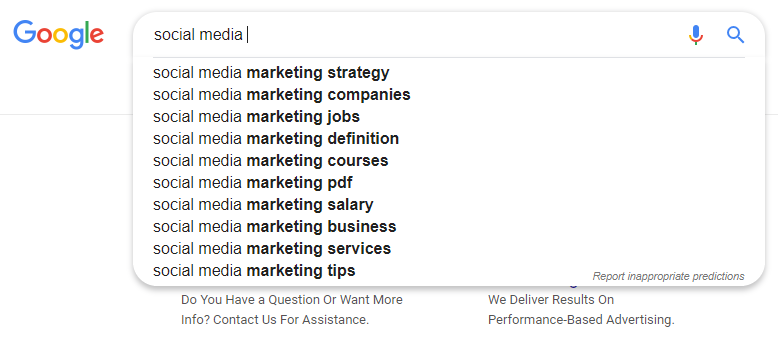
“Social media marketing” is a hot topic related to the submitted phrase, but it’s those words at the end that provide more context what users search for most often. These niche topics may or may not be related to your initial search query or business, but at least they are starting points. You can use them as your long-tails, or continue finding even more:
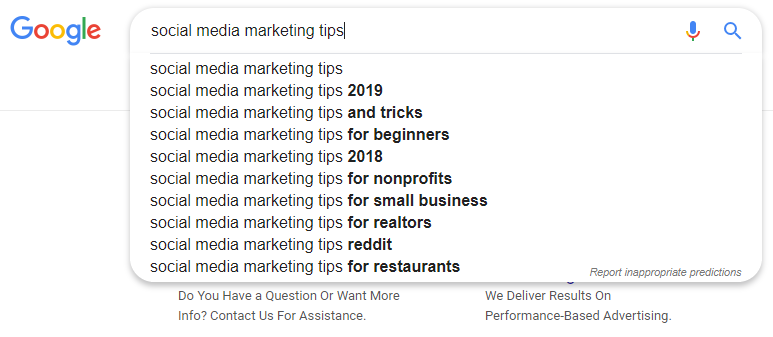
5. Related searches
Similar to autofill, this tip allows Google to do the heavy lifting. Simply type a keyword into the search bar and scroll down to the bottom of the page to find related keywords:
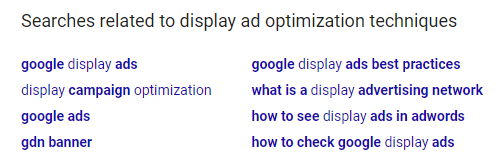
This shows you additional variations of the search term you entered. This is particularly useful because it helps you see how people search for the same topic — just phrased differently — and opens up more potential keyword phrases you can bid on in your campaigns.
Attract high-quality leads with long tail keywords
Since many popular, shorter keyword phrases can be difficult to show positive ROI, finding and using long tail keywords may be a better solution for your campaigns. With more specific search terms, you can generate more impressions by reaching users who are more motivated to complete an online transaction.
Don’t stop there, though. Once your ads show, and people click, you owe it to them in the post-click stage to fulfill your promise made in the ad. Get the most out of your post-click opportunities, sign up for an Instapage Enterprise demo today.

See the Instapage Enterprise Plan in Action.
Demo includes AdMap™, Personalization, AMP,
Global Blocks, heatmaps & more.
